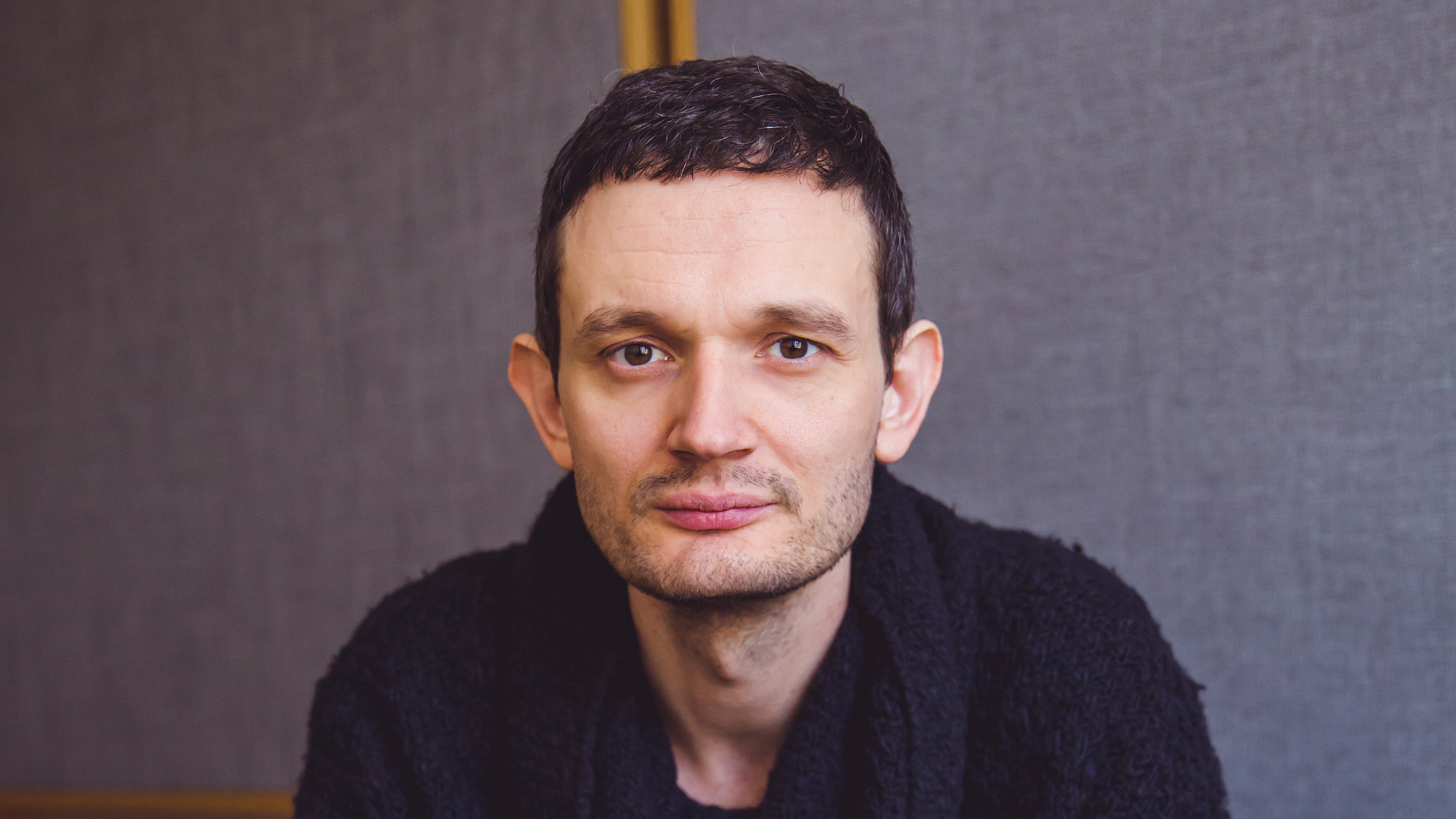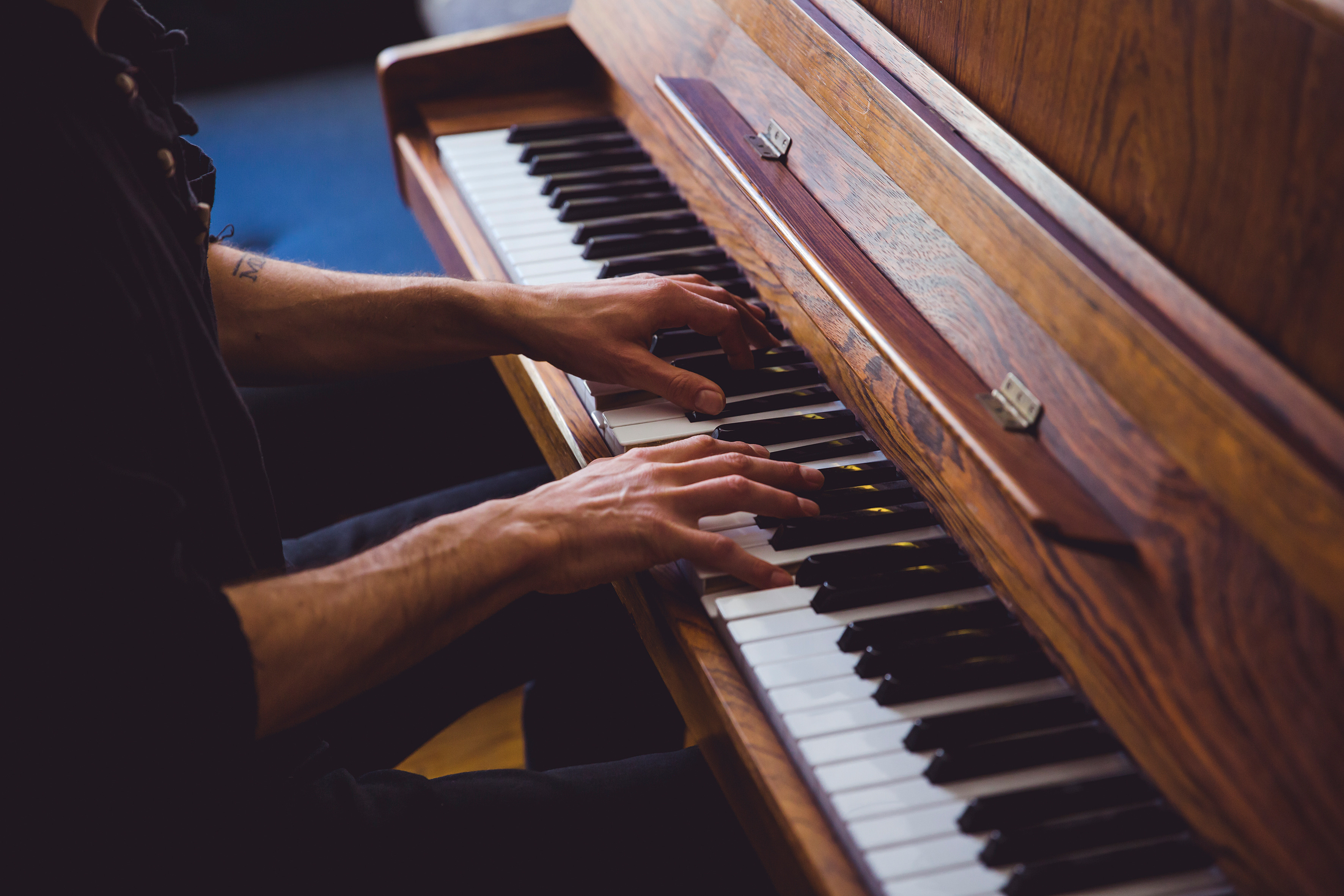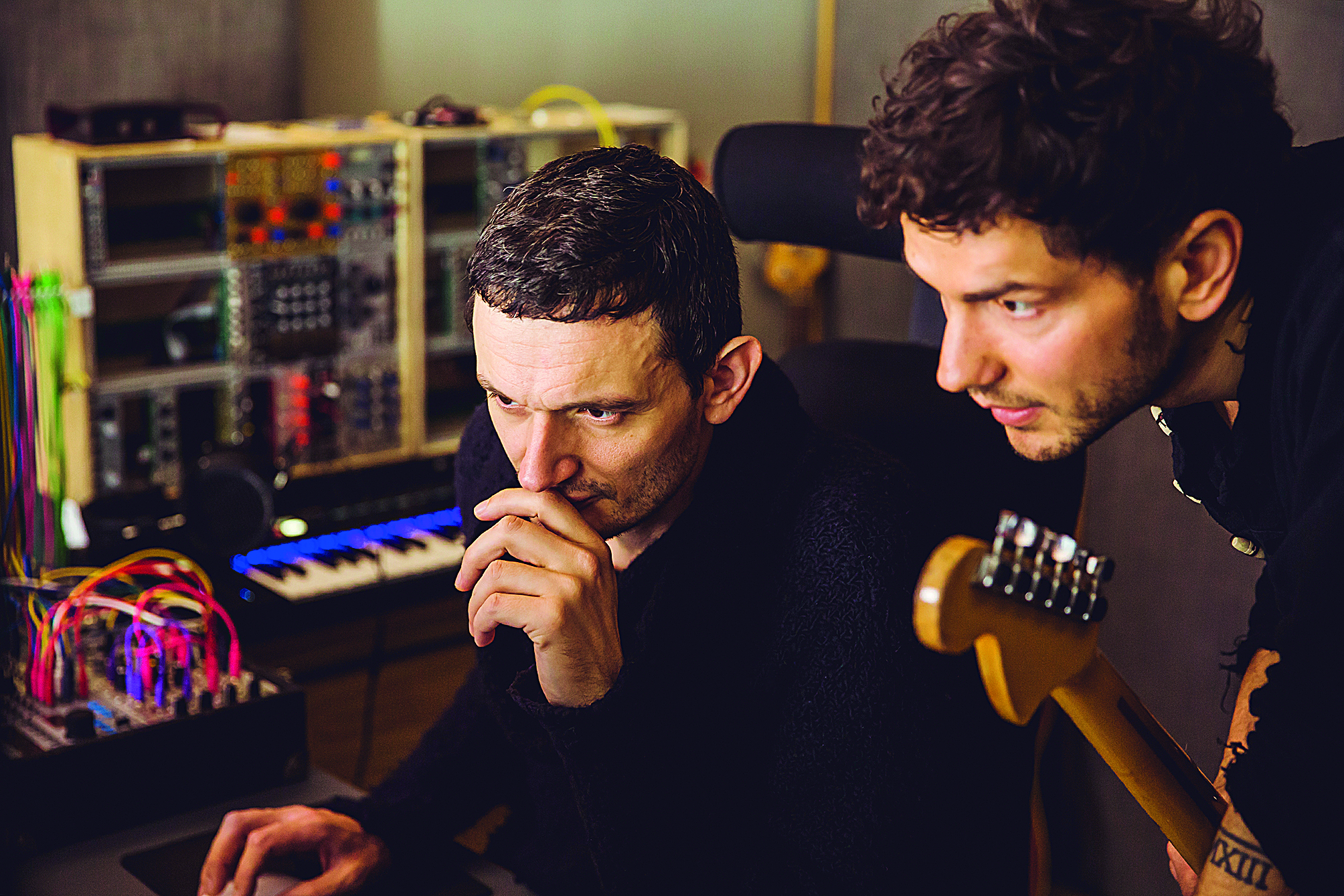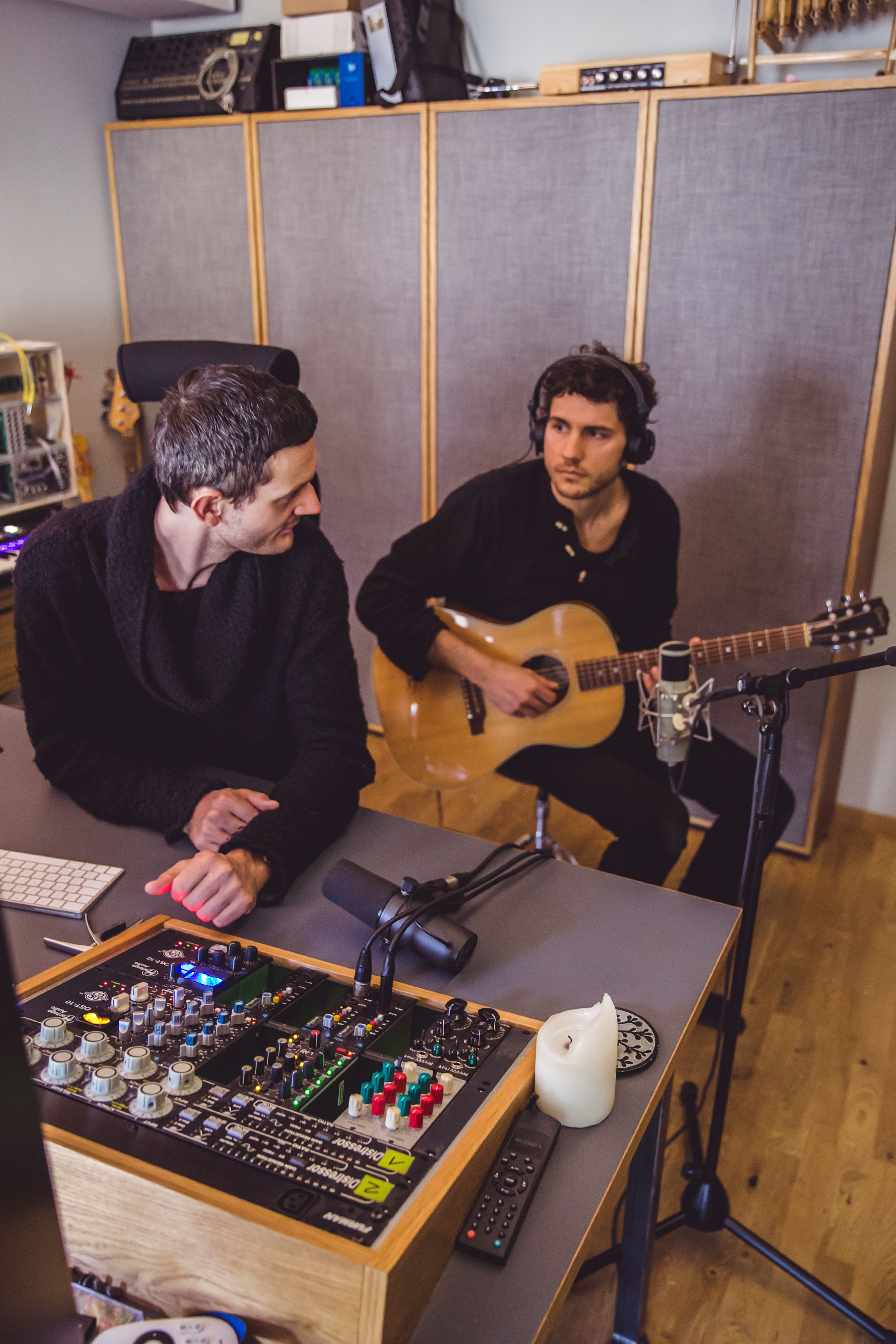Apparat: "I never understood the IDM name - music doesn’t really feel intelligent to me"
German producer Sascha Ring discusses his recording evolution and recent collaboration with multi-instrumentalist Philipp Thimm

Berlin-based producer and Shitkatapult boss Sascha Ring is long known for his releases as Apparat and Moderat, the latter a collaboration with electronic music duo Modeselektor. Influenced by Aphex Twin’s ambient prototypes, Ring began making futuristic techno in the early 2000s with a heavy focus on sound design.
As the years have passed, Apparat’s sound has become increasingly expansive, to the point where each new release has signified a form of creative rebirth. The cautious introduction of vocals on albums such as The Devil’s Walk (2011) reconceptualised the project. Today, they’re front and centre of Ring’s latest album, LP5 - a sublime fusion of acoustic instrumentation and atomised electronic manipulation.

Was your debut album Multifunktionsebene influenced by Aphex Twin’s ambient techno?
“Absolutely – you can totally hear it. I moved to Berlin in 1997 and this album was made within three years of that. While in Berlin I started producing – I bought an old Atari and a shitty Yamaha sampler that didn’t even have 1MB RAM. I started playing around with that gear, but couldn’t make techno anymore. My hometown had quite an intense rave culture. I was 18 and a full-time raver, but it didn’t feel very healthy. I escaped to Berlin to live a more regular life.”
Your early releases were labelled ‘intelligent techno’. Is that a compliment or insult?
“It’s difficult with categories, you never really feel comfortable with them. You don’t ever want to be thought of as just one thing because you do all these different things then somebody tries to put you in a box. It seems a little weird, but the whole IDM movement in the mid-’90s was kind of an open-minded box – something for a lot of tempos and types of electronic music that didn’t really fit anywhere else. I thought that was OK, but never understood the name – music doesn’t really feel intelligent to me [laughs].”
The ‘Intelligent’ part of IDM probably comes from people feeling the music was more considered than just simple 4/4 beats...
Want all the hottest music and gear news, reviews, deals, features and more, direct to your inbox? Sign up here.
“Well my favourite band was Autechre, and I’m sure I was influenced by them a little too much. Now, 20 years later, I thought it was time to pay them a little respect, but I didn’t want to give the record a name that might manipulate people before they’d heard it. Because it’s my fifth record, I called it LP5, which is of course a record by Autechre.”
The whole IDM movement in the mid-’90s was kind of an open-minded box
Their music wasn’t too abstract for you?
“20 years ago they had a moment when they were more accessible; then they discovered Max/MSP. I heard about that, so I played around with the software and really got into programming. Of course it has its own sound, but it’s also a completely open platform. You can go from making basic, generic things to whole environments that write songs themselves depending on how much time you want to spend. Everyone uses it in a different way, but from what I’ve read, Autechre wrote algorithms to create their own sequences – almost like an artificial intelligence, but I don’t know if they used it as a sound generator or a sequencer.”
What aspect of Max/MSP interested you?
“Back in the day I’d use it for granular synthesis because I always loved that. It became a huge part of my sound and there was no way to do it unless you did it yourself. So I am grateful that Max/MSP enabled me to play with granular sounds and samples. Once that was done, I didn’t really know how to perform my records. There were not many options back then, so I programmed my own live performance software, which grew and grew until I ran out of nerd energy. That was another thing that connected me to Modeselektor – they didn’t know how to perform live, so I gave my software to them. That was one of the initial things that our friendship was based on.”
Your second album Duplex was much more expansive. Was it a question of finding your own voice, away from the influence of others?
“Of course, but I’ve always been really open to anything interesting that I hear around me. When I made my first record, I was very much in a tiny techno bubble. From my teenage years to my early 20s, I hadn’t listened to anything other than electronic music, but in the early days of the internet, the electronic scene was very well connected. After the release of my first album, I would play internationally and even got invited to some festivals where I discovered much more interesting music. It was almost overwhelming and I wanted a piece of it. I wanted to add guitar here and there and got into vocals.”

It seems strange that it should take 10 years for you to sing on your records. Did you lack confidence in your voice?
“It was hard because I’d spent five years searching for vocalists but never really found what I wanted. They were really good, but they were what they were. I got so exhausted searching for the right thing, I thought I’d try to do it myself. That all began on the Duplex album. I became open to new things so that whole process started very quickly.”
By incorporating vocals, did you have to change your entire approach to making a track?
“Yes, because the music became much more traditional. I’d write songs using a guitar line or piano, sing on top of them and go from there. I never would have imagined that, because I didn’t have any real musical education. It’s funny how at some point this little techno kid evolved to write songs in the natural way.”
Presumably, where the instrumental component was previously at the forefront, now it has to be more circumspect and sit behind a vocal?
“Not so much because this whole process took me at least ten years and the vocals were never up front carrying everything. They were pretty much equal to the rest of the song, so it didn’t really change my way of working. It was a very slow process production-wise and it felt quite natural to work with vocals because, for a long time, I considered them to be just another instrument.”
Did that filter through to your Moderat work?
“That changed a little bit with Moderat, because those tracks actually became songs. Once you start dealing with more traditional song structures, your vocals automatically become more prominent – and with every record you do they become more up front. At some point you notice, fuck, I’ve done some sort of a pop song, how did that happen?”
You have these beautiful moments in the studio where you’re in a magical mood and things take off of their own volition.
You mentioned an ode to Autechre on LP5, but it’s not immediately apparent...
“After the last Moderat record, both Modeselektor and I felt we should do something completely different and go for the biggest possible contrast. We wanted to break the cycle and get sane again. The healthy thing to do was go back to our own projects with this urge to do that, and my idea was to make a very electronic record with barely any vocals – maybe even another IDM album. But every time I started a song idea it would go somewhere else, and who am I to get in the way of an idea? In the end, it became a mixture of all different things, but a little bit of nerdiness from the early days did return.”
How did that manifest itself?
“When I made Walls, I was tired of sitting in the studio and tweaking sounds for days. I was really thankful for instruments; you can tweak them but they have an instant outcome – like a vocal. That was really refreshing, but now I’ve rediscovered my love for doing sound design sessions again and really enjoy it. Sometimes creative work puts a lot of pressure on you, but sound design is more like being in a laboratory. The record might not sound like my early days, but the spirit is there in the background.”
Do moments of creative flair become more fleeting as you get older?
“You have these beautiful moments in the studio where you’re in a magical mood and things take off of their own volition. You’re channelling this energy, but you’re not totally aware of what you’re doing. That’s something I really appreciate and don’t want to destroy because that’s the moment a song takes an unexpected direction. Unfortunately, it happens less and less, but you appreciate it more.”
We understand Philipp Thimm was heavily involved in the recording process of LP5?
“Philipp has been my cello player in the band for a long time. He’s classically trained on cello, but also guitar. I’ve done a lot of different things with him, like film soundtracks and theatre music because we complement each other quite well. I try to master acoustic instruments but always fail because I’m not patient enough. There’s a thought in the back of my head that I shouldn’t really become too virtuous on any instrument because I don’t want to lose the naivety that is so important to my approach. So I tried to find someone who can do this for me, and Philipp was quite perfect.”

How did your working relationship evolve?
“Working with classical musicians is hard sometimes because they don’t really understand improvisation – they need a written score to function – but Philipp’s the opposite, he’s into electronic music too. Our collaboration started by him being a human sampler, but it developed into a real partnership. At some point he started musical ideas as well and, funnily enough, those would be the more electronic ones. That was also very exciting for him.”
The album was recorded at a number of studios in Berlin. What was behind that decision?
“That was because it took such a long time to make this record. At first, we went to the JRS studio run by Axel Reinemer of Jazzanova. We got along beautifully, but at some point he became very popular and everything got very spontaneous. Our first session with him was a real band session, which was my concept number two. I thought maybe it was time to try improvisation, but I was the weakest part in that group. I can’t really interact with other people without being prepared, so we went back to a more traditional way of producing in my little music room. We recorded a lot of different things, but sometimes we needed to do something else, like use a drum kit for example. I tried recording drums in my recording room but it’s a residential building. I had my neighbour yelling at me the next day, so we had to book Hansa Studios.”
Which no doubt has a certain aura about it?
“It does have an aura but the cool thing is, we worked in this very traditional place with a lot of history but our engineer was quite a young Norwegian lady who was super-motivated. We recorded drums for four days in a huge room.”
Presumably, Hansa also gave you access to a lot of vintage gear?
“Yes, and it’s a bummer that people can’t afford to hire big studios for a long time these days because we recorded a ton of really cool stuff and it was such a lot of fun. Unfortunately, although it was a good idea to have more rhythms and drums on this record, at some point I started muting them again and again. It just didn’t feel necessary for what those songs needed, so we ended up with just a few samples here and there, except for the track Dawan.”
I’m becoming more and more obsessive with how I want things. The more a development of a song goes towards the end, the more I know what I want.
The album was mixed by Gareth Jones. What was behind that choice?
“Because when I met Gareth for the first time, although he is of course very skilled, he’s also a really easy-going, cool dude. That’s so important because you choose to be in this tiny room with someone for a very long time. I once made a terrible choice on a film soundtrack because I didn’t judge the director the right way. He turned out to be a really crazy and obsessive guy who wouldn’t let me do what I wanted, and that was really tough.”
Were you a fan of some of the ’80s artists that Gareth famously produced?
“Even as a kid I was a Depeche Mode fan, as I’m from East Germany and there was really limited access to music. You have to remember, I lived in a cage for the first 12 years of my life. There was no Depeche Mode for sure, only shitty music, but there were all these tapes around that had been copied 50 times and, for some reason, Depeche Mode was one of these acts that was on heavy tape rotation. Another one was The Cure. My sister was listening to them, so I got introduced very early on and kept on loving them.”
Did working with Gareth pan out as you’d expected it to?
“I’m becoming more and more obsessive with how I want things. The more a development of a song goes towards the end, the more I know what I want. I’m not as equally a skilled sound engineer as Gareth, but I can do these things somehow, they just take a very long time and 55 versions. Whenever I mix with someone, I show up with very well-developed premixes, so there’s not much for the sound engineer to do. It’s a bit of a waste of their talent because while I’m in the mixing room with them it’s really hard for me. When I’m close to the end of a song, I have a very strong idea of what I want.”
Is your current studio part of a complex?
“I really wanted to build a proper studio with a big mixing console and recording room, but I was in a studio with a bunch of kids producing other hip-hop artists. They became super successful and took over the whole studio. I didn’t feel at home anymore because there would be German rappers in my kitchen. So I sold that studio and didn’t have one for a while. I wanted to find a place that was comfy, where I could sit at night and just be in a ‘music room’ rather than a studio, so I bought a little flat and created a room that has windows where I can look down on the street and still feel part of life. There’s not much in there as there’s not much space, and I’ve recently realised that when I have too many possibilities I only get confused.”
That begs the question: why did you buy a modular system?
“That’s the reason I didn’t allow myself to switch on the modular system while making the record; otherwise I never would have finished it. I had this strange moment when I had a motorcycle accident and was tied to my couch for two months. The bike got stolen the next week, so I thought, fuck it, I’m not going to replace it, I’m going to buy a modular system. I bought a small Make Noise suitcase and was playing around with it because I thought it was time to get nerdy. It was cool and I made some nice sounds with it, but I’m not patient enough to really get something special out of that.”
“I come from a church music background. I studied cello and worked a lot with other people in studios, mostly performing strings. Sascha somehow found me so I started producing with him – we did a musical adaption based on a score for a theatrical production of War and Peace.
“We wanted to be more minimal and create something with a very dry sound, but we also relied on session playing. With our theatre, music and film compositions we always had deadlines to meet; this time, we didn’t want to overthink but also wanted to just listen back and let the results unfold.
“I brought a Celtic harp, orchestral harp, mandolin, ukulele, and of course the electric guitar and bass. We also used acoustic guitars, these weird marimba-style instruments and a Moog Theremin, which I got for my birthday. We went to a recording studio where we had room to set up an entire band and jammed ideas. Then at some point we incorporated parts of those jams into the record.
“We’d process a lot of the sounds. Sascha is more of a modular synth master now, so I’d reverse sounds, sample them back using a normal sampler and then time-stretch the reverb as far as possible. We also used the Roli Seaboard. Being a string player, it was fascinating to make these vibrato sounds using a silicone-based keyboard. I guess we wanted to find that transition where you can no longer tell whether a sound is acoustic or electronic – to trick people. I’m still inspired by Sascha, he’s a powerhouse. We have a master/apprentice thing going, I can learn so much from him.”
None of your modular setup made the album?
“The main thing I used on the album, even though I didn’t want to go into the modular rabbit hole, was the ER-301 Sound Computer made by this crazy guy from Japan. It’s great for tweaking samples as it has a really good granular function. I’m still really into sample manipulation and granular synthesis.”
What other electronic hardware did you use in the recording of the album?
“I have some synthesisers but none that I would really turn to. I’d usually use software synths for bass sounds, but LP5 is probably 70% recorded instruments and 30% simple synths processed using whatever outboard was compatible. The recordings are mostly instruments going through mics and putting everything through a good recording chain. Once everything was in the computer I’d use my favourite plugins, which are also not too spectacular – it’s more about the combinations.”
What’s in your outboard chain?
“I have a small SSL mix desk. Eight channels aren’t enough, but it’s everything to me. It’s my little monitor controller where all my preamps go into the computer, but I’m not really mixing on it. I do have a few old-school preamps; I’m mostly using ATIs, but I also have the Shadow Hills preamp and a few cool EQs. The Zähl EQ1 is amazing. It’s really precise but sounds musical. I also really want to get into those newer Electrodyne preamps, but all these things are really minor details.”

You’re a Logic user?
“I’m still on Logic. Modeselektor made me use that on the first Moderat record. I had to switch from Cubase, but now they’ve switched to Ableton Live, so if I make another Moderat record I’ll have to switch to that. When I had an idea to make an electronic record, I wanted to make it with Ableton and have it be very loop-based, but loops that were not in sync. When I noticed the sound of the record was changing and I started tracking a lot of instruments, Ableton Live was no longer the right platform. I started using it more like an old-school tape recorder, which was when going back to Logic became more logical.”
What’s behind your choice of speakers?
“I’m glad you asked. I think the speaker situation is so much more important than having a Neve desk or a preamp on your microphone because if you don’t really hear what you’re doing, it’ll sound shit in the end. I spent a lot of time making the room sound good and had Genelec speakers before, but my acoustician told me the room was too small to use a speaker with a bass port in the back because it would create too much turbulence. He said it’s better to have speakers with a front port or completely enclosed, and some guy in a shop told me about these awesome speakers that nobody really uses made in Poland called Sveda Audio Dapo and I don’t know why nobody knows about them.”
Why would you recommend these?
“They were better than all the others I tried. They have two mids, a tweeter in the middle and a really fast response that is a lot more detailed. That’s what ported speakers often miss. Because the frequency’s lower, it’s like the bass port is cheating somehow. But that also meant that I needed a subwoofer, which I always used to avoid because I was afraid of them. Fortunately, I knew someone who told me where to put them and measured the room.”
You’re embarking on a big tour of Europe in April. What will your live setup consist of?
“We’ve just started to rehearse now. We’ve extracted all the sounds from the sessions but now have to find out who is going to play what, which is not so easy. Even though the record has a lot of acoustic instruments, it was still made in a very electronic way. There’s lots of layering and things happening at the same time. To bring an album like that to the stage you have to do some re-engineering. I’ll play some guitar, but vocals are more important.”
Is it your time to play the rock star now?
“That was on my last tour with Moderat, which is why I don’t need to do that anymore [laughs].”
The new Apparat album LP5 is available now on Mute Records. For more information, visit: facebook.com/apparat.official


Future Music is the number one magazine for today's producers. Packed with technique and technology we'll help you make great new music. All-access artist interviews, in-depth gear reviews, essential production tutorials and much more. Every marvellous monthly edition features reliable reviews of the latest and greatest hardware and software technology and techniques, unparalleled advice, in-depth interviews, sensational free samples and so much more to improve the experience and outcome of your music-making.
